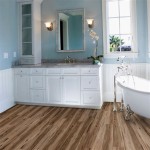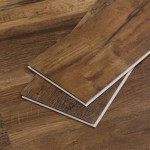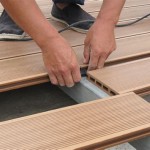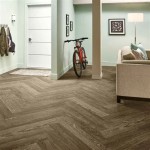What is Italian Marble Flooring?
Italian marble flooring represents a highly esteemed choice within the realm of interior design and construction, revered for its inherent beauty, exquisite veining, and enduring legacy. Characterized by its luxurious aesthetic and historical significance, Italian marble has graced prestigious structures and private residences for centuries. This article delves into the definition, characteristics, types, installation, maintenance, and advantages of Italian marble flooring, providing a comprehensive understanding of this premium material.
The term "Italian marble" broadly refers to marble that is quarried in Italy, predominantly in the Carrara region of Tuscany. This area is world-renowned for producing some of the highest quality marble available, owing to the geological formations and unique composition of the rock. The marble is formed through the metamorphism of limestone or dolomite, a process involving intense heat and pressure that alters the original rock structure, resulting in a dense, crystalline material. This process gives the marble its characteristic veining and patterns, which are unique to each block and contribute to its individual beauty.
While several countries produce marble, Italian marble is distinguished by its purity, consistent color, and intricate veining. These qualities have made it a favored material for sculptors, architects, and designers throughout history. From classical Roman architecture to modern luxury homes, Italian marble has consistently been chosen for its ability to elevate the aesthetic appeal of any space.
Key Characteristics of Italian Marble
Italian marble possesses several key characteristics that contribute to its desirability and set it apart from other types of stone flooring. These include: color, veining, porosity, and durability, each of which plays a crucial role in the overall appearance and performance of the material.
Color: The color of Italian marble varies widely, ranging from pure white to shades of grey, black, green, pink, and red. The color is determined by the presence of various minerals and impurities within the stone. Carrara marble, for example, is known for its white or blue-grey background with fine, feathery veining. Statuario marble is prized for its bright white color and bolder, more dramatic veining. Other varieties, such as Calacatta marble, feature a white background with thick, contrasting veins of gold or grey. The diverse color palette allows for a wide range of design possibilities, catering to different aesthetic preferences.
Veining: The veining patterns in Italian marble are perhaps its most distinctive feature. These veins are formed by mineral deposits that seep into the stone during its formation, creating intricate and unique patterns. The density, color, and direction of the veins vary depending on the type of marble and the specific geological conditions under which it was formed. Some marbles have subtle, delicate veining, while others exhibit bold, dramatic patterns. The veining adds depth and character to the stone, making each slab a unique work of art.
Porosity: Marble is a porous material, meaning it has small pores that can absorb liquids. The degree of porosity varies depending on the type of marble. Generally, Italian marble is less porous than some other types of natural stone, but it is still susceptible to staining if not properly sealed. Proper sealing is essential to protect the marble from spills, stains, and moisture damage. Periodic resealing is also recommended to maintain its appearance and durability.
Durability: Italian marble is a durable material that can withstand significant wear and tear. However, it is relatively soft compared to granite or quartz, making it more susceptible to scratches and etching. The softer nature of marble allows it to be easily shaped and carved, which is why it is often used for sculptures and intricate architectural details. In terms of flooring, proper maintenance and care are necessary to prevent damage and preserve its beauty over time. Using mats at entryways, avoiding abrasive cleaners, and promptly cleaning spills are all important steps in maintaining the integrity of Italian marble flooring.
Types of Italian Marble Used for Flooring
Several types of Italian marble are commonly used for flooring, each with its own unique characteristics and aesthetic appeal. The most popular types include Carrara, Calacatta, Statuario, and Botticino, among others. Understanding the differences between these types is crucial for selecting the right marble for a specific project.
Carrara Marble: Carrara marble is perhaps the most well-known and widely used type of Italian marble. It is characterized by its white or blue-grey background and fine, feathery veining. Carrara marble is relatively abundant and is therefore more affordable than some other types of Italian marble. It is a versatile material that can be used in a variety of applications, including flooring, countertops, and wall cladding. Within the Carrara family, there are variations such as Bianco Carrara and Statuarietto, which offer subtle differences in color and veining patterns.
Calacatta Marble: Calacatta marble is considered one of the most luxurious and sought-after types of Italian marble. It features a bright white background with thick, bold veins of gold or grey. The dramatic veining and striking contrast make it a popular choice for high-end residential and commercial projects. Calacatta marble is rarer and more expensive than Carrara marble, due to its exceptional beauty and limited availability. Common variations include Calacatta Gold and Calacatta Borghini, each showcasing unique vein patterns and color intensities.
Statuario Marble: Statuario marble is renowned for its pure white color and bold, dramatic veining. It is often considered the most prestigious type of white marble and is highly prized for its use in sculptures and other artistic applications. Statuario marble is relatively rare and expensive, making it a luxurious choice for flooring and other interior design elements. Its pristine appearance and striking veining patterns create a sense of elegance and sophistication.
Botticino Marble: Botticino marble offers a warmer and more subdued aesthetic compared to the white marbles. It is characterized by its beige or cream-colored background with subtle veining patterns. Botticino marble is a durable and versatile material that is suitable for a wide range of applications, including flooring, wall cladding, and staircases. Its neutral color palette makes it a popular choice for both residential and commercial projects, providing a timeless and elegant look.
Other types of Italian marble include Nero Marquina (black marble), Rosso Verona (red marble), and Verde Alpi (green marble), each offering unique colors and patterns that can be used to create distinctive and visually appealing flooring designs. The choice of marble will depend on the desired aesthetic, budget, and specific requirements of the project.
Installation and Maintenance of Italian Marble Flooring
Proper installation and maintenance are essential for ensuring the longevity and beauty of Italian marble flooring. The installation process requires skilled professionals who have experience working with this delicate material. Regular cleaning and sealing are crucial for protecting the marble from stains, scratches, and other damage.
Installation: The installation of Italian marble flooring begins with proper subfloor preparation. The subfloor must be clean, level, and structurally sound to provide a stable base for the marble tiles. A thin-set mortar is then applied to the subfloor, and the marble tiles are carefully laid in place. It is important to use high-quality mortar and grout that are specifically designed for use with natural stone. The tiles are typically spaced closely together, with narrow grout lines, to create a seamless and elegant look. After the mortar has cured, the grout is applied and cleaned, and the marble surface is thoroughly cleaned and polished.
Sealing: Sealing is a critical step in protecting Italian marble flooring. A high-quality penetrating sealer is applied to the marble surface to prevent liquids from being absorbed into the stone. The sealer fills the pores of the marble, making it more resistant to stains and moisture damage. The frequency of sealing depends on the type of marble and the level of traffic it receives. Generally, it is recommended to seal Italian marble flooring every one to three years. Regular cleaning with a pH-neutral cleaner helps to preserve the sealer and maintain the marble's protective barrier.
Cleaning: Regular cleaning is essential for keeping Italian marble flooring looking its best. It is important to use a pH-neutral cleaner specifically designed for use with natural stone. Avoid using acidic or abrasive cleaners, as these can damage the marble surface. Sweep or vacuum the floor regularly to remove dirt and debris. Wipe up spills immediately to prevent staining. For more stubborn stains, use a poultice made of baking soda and water or a commercially available stain remover specifically formulated for marble. Always test the cleaning solution in an inconspicuous area before applying it to the entire floor.
Maintenance: In addition to regular cleaning and sealing, there are several other steps that can be taken to maintain Italian marble flooring. Use mats at entryways to trap dirt and debris. Avoid wearing shoes with hard soles, as these can scratch the marble surface. Place felt pads under furniture legs to prevent scratches. Promptly repair any chips or cracks to prevent further damage. Consider hiring a professional marble restoration company to periodically polish and restore the floor to its original luster.
By following these installation and maintenance guidelines, Italian marble flooring can retain its beauty and elegance for many years. The investment in proper care and maintenance will ensure that the marble remains a stunning and valuable asset to any home or building.

Opt For Healthy And Elegant Imported Italian Marble

How Do You Keep Italian Marble Floors Looking Flawless Let S Find Out Marblelife

Italian Marble Flooring Types And Features Cbvar

Is Beige Italian Marble Flooring The Right Choice For Your Home Radhe Stonex

Italian Marble Flooring Highlighting The Pros And Cons Stone Hub Kishangarh

Why Choose 100 Italian Marble Flooring For Your Home The Quarry Blog

20 Best Italian Marble For Flooring In S

Italian Marble Tiles Kajaria S No 1 Tile Co

Italian Marble Archives Page 3 Of Goyal Marbles Dealer

30 Living Room Italian Marble Flooring Design Ideas For Luxurious Look
Related Posts








